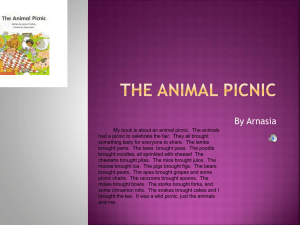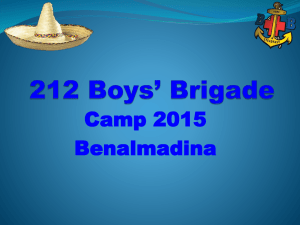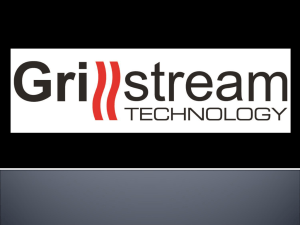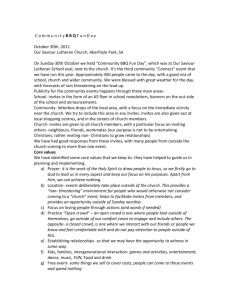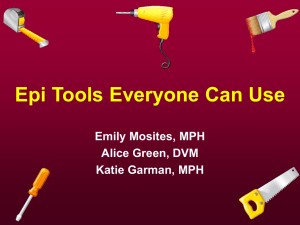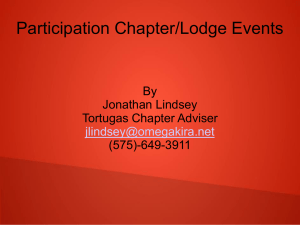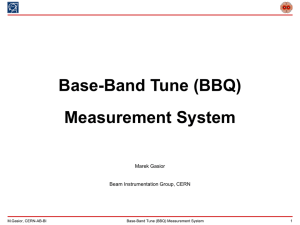SWaldon1
advertisement
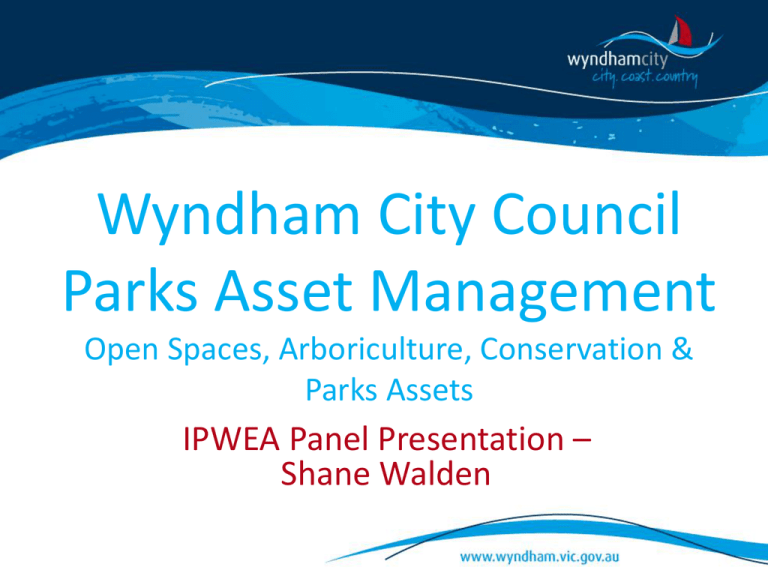
Wyndham City Council Parks Asset Management Open Spaces, Arboriculture, Conservation & Parks Assets IPWEA Panel Presentation – Shane Walden Wyndham City • 542 KM2 • 27.4 KM Coastline • Designated Growth Corridor • Top 3 Growth Areas in Australia • Community TOP4 • Transport • Parks & Recreation • City Image Immediate Challenges • Complexity of Developer Design • Internal Handover Processes from: – Landscape Architects/Planners – Capital Works Teams – Major Projects, Buildings, Recreation, Roads. • Asset Management Systems • Funding Goal • We are the stewards of the Community’s assets and ensure presentation in accordance with funded outcomes. • We provide safe, usable, sustainable and aesthetically appealing passive, active and conservation spaces for all sectors of the community. Asset Management 5 Basic Principles: • Physical Scope – landholdings etc • Public Expectation • Design Capacity • Affordability • Structure Management Levels Asset Management Styles • Low level – basic period maintenance; field staff drive tasks. • Medium Level – moderate sophistication; asset base understood and attendances planned. • High Level – multi level sophistication; multiple management/maintenance models understood and best chosen for variable parameters. Whole of Life Management Service Level Specification Activity Objective BBQ and picnic area cleaning All Barbeque and picnic table facilities shall be cleaned two times (2x) per week, except the Category A sites which are cleaned 7 days a week between 1December 2013 – 30 March 2014. All maintenance works shall be carried out so as not to compromise the integrity of the intent of parks assets design or structure ensuring the provision of an aesthetically pleasing and safe environment. BBQ is to be left in operating condition unless a defect is reported. All works are to be carried out using safe and environmentally friendly products. Exclusions Ensure BBQ and picnic table’s life cycle is optimised through correct maintenance practices. Installation, repair and/or replacement of BBQ’s and picnic tables. NB – Refer to 1.1 (Routine Surveys, On-going Inspections, Meetings and Reports) for further information on features outside the specific maintenance standard. NB – If the BBQ or Picnic Area is being used by the public, the service provider shall come back at a later time to clean the facility. NB – Refer to attachment 2 (schedule of BBQ and Picnic Areas) Service Level Specification Task BBQ Cleaning Table and Bench Top Cleaning Measure The following cleaning is required at all BBQ areas: Clean hotplate and bench tops (Steam clean or other methods may be considered by Council); Scrape of the hot plate and surrounds with a flat blade scraper to remove fat and food scraps, paying particular attention to corners and edges; Scour the surface to remove material that is cooked onto the surface or other build up or rust; Fat trays to be emptied and cleaned; Ensure that the hot plate drainage hole is free of obstructions; Clean all spills surrounding BBQ’s NB Fat and food scraps shall be disposed of in an appropriate manner to a tip site nominated by the Contractor. It must not be disposed of into the sewage or stormwater drainage systems or to public litter bins. Detergents and/or soap shall be used to clean surfaces. There are a mixture of bench surfaces, including wooden, metal (iron, aluminium or other) and masonry. The following is required at all picnic areas: Wet wash cloth to wipe down the table; Wash and wipe tables and seatings; and. Repairs Clean all spills surrounding the tables and seating. At the completion of cleaning turn on BBQ and check it is functioning, report any issues/damage for repair Visually check the condition of all BBQ’s and picnic tables and report any requirements for upgrades or repairs Litter Control Remove all litter within a 5 meter radius of picnic tables and BBQs Leaf blow surrounding paved area. Minimum Freq 2 per week (except during the nominated periods). 2 per week (except cat A during the nominated period). Within one working day. Within one working day. 2 per week (except cat A during the nominated period). Measurement • • • • Binary – Yes / No Holistic but Localised Public Information Public Action Plans Future Challenges • • • • • Executive and Councillor Buy-in – 1 message Better WOL modelling of projects Design with maintainability in mind Standardisation of designs Maintenance intent documentation
